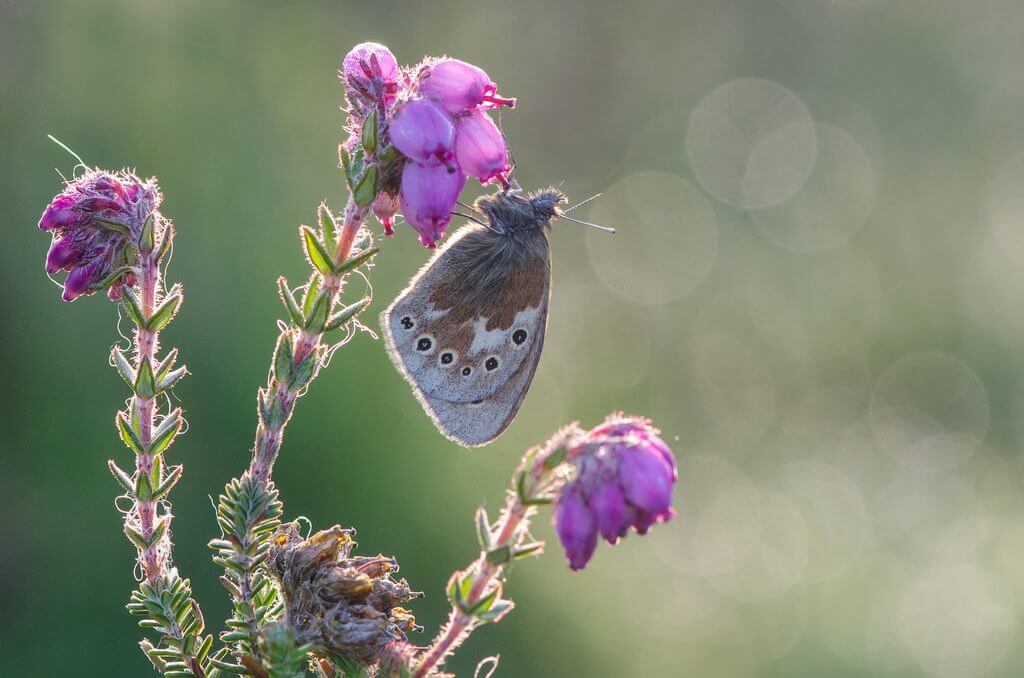Tim writes: the Large Heath is Britain’s most variable butterfly. So much so that when it was first discovered in Britain it was named as three different species. They are quite a rare northern butterfly inhabiting peat bogs where their caterpillars feed on Cotton-grasses. This was taken early morning at Winmarleigh Moss in Lancashire where it was nectaring on Cross-leaved Heath. I positioned myself so it was backlit against the morning sunshine and laid down flat for a low point of view. My front was soaked from head to foot and my elbows were deep in wet Sphagnum. I was also covered in ants but I wasn’t going to get up until I had my photograph. This is the heavily spotted form that inhabits the southern part of its range, characterised by numerous large eyespots.
Taken with a Nikon D7000 with Nikkor 105mm macro 1/160 f8 ISO 800
[registration_form]
Thank you so much for sharing this. It is absolutely wonderful – just the kind of macro photo I like. It was balm for the spirit after reading the depressing recent twitters about the potential damage to our green and pleasant land from HS2 and fracking and the ‘Natural’ England permission to kill a few buzzards to protect some of the millions of pheasants……….No wonder sections of our population thing it is OK to kill off a few Hen Harriers if there is official permission to kill raptors when their presence is ‘inconvenient’.
Worth the effort (and soaking ; )… Lovely photo…
great picture Tim!
Clearly muirburn is going to have an impact on this butterfly, but I find it strange that it is not really discussed in much of the info that is published online. A lot of focus is rightly placed on the loss of raised bog, however it does breed on blanket bog which is much more prone to be burnt. From what I can see of the life cycle, the caterpillar is active during the main burning season so would be vulnerable.
Cracking back light.
A lovely photograph. I see there is a new programme on BBC 2 on Friday called Highlands: Scotland’s Wild Heart. The first programme is about Spring “beginning with the torching of the heather to promote growth” . Interesting to see how it’s handled.
In a nutshell why I never made it as a nature photographer – couldn’t hack lying face-down in an ant-infested bog. All praise to Tim that he did.
With the massive decline on Cuckoo even in upland areas work is needed on the effect of loss of moth caterpillars as well as butterflies due to burning and introduction of non native birds.